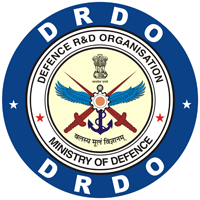Hypersonic Intake Starting Characteristics–A CFD Validation Study
DOI:
https://doi.org/10.14429/dsj.62.1340Keywords:
Numerical simulation, hypersonic intake, computational fluid dynamicsAbstract
Numerical simulation of hypersonic intake starting characteristics is presented. Three dimensional RANS equations are solved alongwith SST turbulence model using commercial computational fluid dynamics (CFD) software. Wall pressure distribution and intake performance parameters are found to match well with experimental data for different free stream Mach number in the range of 3-8. The unstarting of the intake is traced from the sudden drop of mass capture ratio. Wall condition (adiabatic or isothermal) is seen to have pronounced effect in estimating the performance parameters in the intake. The computed unstarting Mach number is seen to be higher for adiabatic condition compared to isothermal condition. For unstarting case, large separation bubble is seen near the entrance of the intake, which is responsible for expulsion of the shock system out of the intake.
Defence Science Journal, 2012, 62(1), pp.147-152, DOI:http://dx.doi.org/10.14429/dsj.62.1340
References
Schmitz, D.M. & Bissinger, N.C. Design and testing of 2-D fixed –Geometry hypersonic intakes. AIAA Paper No. 98-1529, 1998.
Schneider, A. & Koschel, W.W. Detailed analysis of a mixed compression hypersonic intake. ISABE Paper No. 99-7036, 1999.
Goonko, Y .P.; Latypov, A.F.; Mazhul, I.I.; Khartinov, A.M.; Y aroslavtsev, & Rostland, P. Structure of flow over a hypersonic inlet with side compression wedges. AIAA Journal, 2003, 41(3), 436-47.
Haberle, J. & Gulhan, A., Experimental investigation of a two-dimensional and three dimensional scramjet inlet at Mach 7. J. Propulsion Power, 2008, 24(5), 1023-034.
Hebrale, J. & Gulhan, A. Internal flowfield investigation of hypersonic inlet at Mach 6 with bleed. J. Propulsion Power, 2007, 23(5), 1007-017.
Das, S. & Prasad J.K. Starting characteristics of a rectangular supersonic airintake with cowl deflection. Aeronautical Journal, 2010, 114(3), 177-89.
Dirk, S.; Andreas, H. & Ulrich, W. Reduction of shock induced boundary layer separation in hypersonic inlets using bleed. Aerospace Sci. Technol., 1998, 2(4), 231-39.
Molder, S.; Timofeev, E.V. & Tahir, R.B. Flow starting in high compression hypersonic air inlets by mass spillage. AIAA Paper No. 2004-4130, 2004.
Reinhold, A.; Gerbsch & Agarwal, Ramesh K. Computation of hypersonic ramjet-inlet flowfields using an upwind parabolized Navier-Stokes code. AIAA Paper No. 88-2828, 1988.
Lind, C.A. & Lewis, M.J. The effect of shock/shock interactions on the design of hypersonic inlets. AlAA Paper No. 90-2217, 1990.
Brenneis, A. & Wanie, K.M. Navier-Stokes results for hypersonic inlet flows. AlAA Paper No. 91-2472, 1991.
Barber, T.J.; Hiett, D. & Fastenberg, S. CFD modeling of the hypersonic inlet starting problem. AIAA Paper No. 2006-0123, 2006.
Donde, P.; Marathe, A.G. & Sudhakar, K. Starting in hypersonic intakes. AIAA Paper No. 2006-4510.
Yu, D.; Chang, J.; Bao, W. & Zong, X. Optimal classification criterions of hypersonic inlet start/unstart. J. Propulsion Power, 2007, 23(2), 310-16.
Emami, S. & Trexler, C. A. Experimental investigation of inlet combustor – isolators for a dual mode scramjet at a Mach number of 4. NASA Technical Report No. NASA TP3502, May 1995.
Fluent 6.3 User’s guide, 2006, Fluent Inc, USA
Roe, P.L. Characteristic based schemes for the Euler equations. Ann. Rev. Fluid Mechanics, 1986, 18, 337-65.
Wilcox, D.C. Multiscale model for turbulent flows. AIAA Journal, 1988, 26(11), 1311-320.
Menter, F.R. Performance of popular turbulence models for attached and separated adverse pressure gradient flows. AIAA Journal, 1992, 30(8), 2066-072.
Pasha, A.A. & Sinha, K. Simulation of hypersonic shock/turbulent boundary-layer interactions using shockunsteadiness model. J. Propulsion Power, 2012, 28(1), 46-60.
Wilcox, D.C. Formulation of the k ?? turbulence model revisited. AIAA Paper No. 2007-1408.
Downloads
Additional Files
Published
How to Cite
Issue
Section
License
 Where otherwise noted, the Articles on this site are licensed under Creative Commons License: CC Attribution-Noncommercial-No Derivative Works 2.5 India
Where otherwise noted, the Articles on this site are licensed under Creative Commons License: CC Attribution-Noncommercial-No Derivative Works 2.5 India

